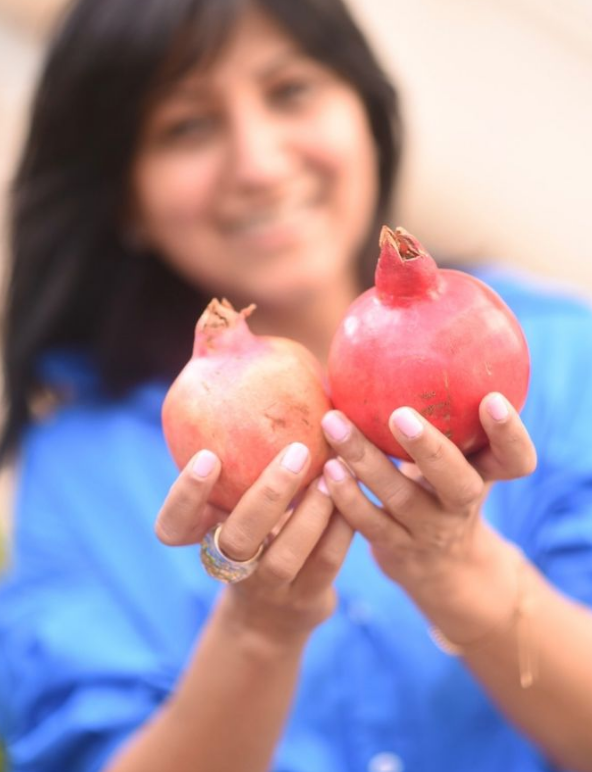When I hear the word “fusion”, it conjures up images of the frozen food aisle at the supermarket, exhibiting a gallery of TV dinner meals. Some consider fusion cuisine inauthentic blasphemy or a cloying attempt at symbolizing post-racial harmony. But, verbiage aside, it is cooking fusion foods that makes me feel whole.
I’ve grown up with both Ashkenazi and Japanese families. It’s a robust cultural upbringing I’ll forever be grateful for, but I’ve often felt like a watered-down version of my parents, inauthentic in the communities that I come from. But this is no unique sentiment. It seems like everyone, regardless of cultural upbringing, has felt in-between worlds at some point in their lives — a supposed sense of belonging replaced with solitude. Woven into the existence of the in-between is often loneliness. Yet, the universality of in-betweenness renders it a shared, communal sentiment — a thread that ties much of humanity together.
It is such a sentiment that inspired the creation of Tlaim: The Patchwork Cookbook. This cookbook will feature the recipes and stories of Jews of Color (JoC). Tlaim aims to celebrate the racial and ethnic diversity within the Jewish community and relieve the pressure that many JoC feels to conform to Eurocentric norms. Submissions are open at globaljews.org/projects/tlaim to all self-identifying JoC, with additional information on the project on Instagram @tlaim.cookbook. Recipes will be paired with poems, stories, essays, and photographs from submitters.
Working on this cookbook has given me a chance to take another look at what we mean when we say Jewish food. To some, Jewish food might be something that you grew up eating at Shabbat with your family. Maybe it’s what you ate for the Yom Kippur break-fast. Or simply something that makes you feel spiritual. What foods and their associated emotions connect us to our Judaism, to our identities? These are the questions I’m asking myself through this project. Learning about how some other JoC practices their Judaism outside of the framework of Ashkenazi American traditional norms has expanded my own sense of belonging.
Grappling with finding a balance in how to most respectfully practice and reclaim my cultural heritage, I’ve found power in crafting my own traditions — recipes as food rituals. Tradition beckons us to follow rules and rituals of the past, recreating histories that might otherwise be forgotten if not for written records. We trace the hands of our ancestors, pulling their legacies from ashes to actuality. As someone who internalizes my differences that others have pointed out, I sometimes fall into gatekeeping myself from eagerly practicing these traditions by questioning whether they are even mine to practice. When I feel inauthentic, I wonder whether others view me as an outsider appropriating their sacred tradition — the pinnacle of authenticity. Yet, seeing other JoC practice these very religious rituals and more has empowered me in ways I cannot describe, and I am forever grateful for this community.
Ultimately, I create recipes because these new traditions allow me to cultivate my own version of authenticity. This is not to say that those who feel in-between must create their own traditions, but instead, for me, the practice of creating new traditions allows me to explore my various facets in unity. It brings me inexplicable joy to combine and share my cultures through fusion food, embracing the exhilaration of recipe experimentation and creating a symbolic manifestation, albeit utopic, of cross-cultural unity I hope to foster.
In the spirit of redefining traditions, I present to you a Japanese-Jewish Hanukkah recipe. On Hanukkah, we eat foods laden with oil to commemorate the small amount of oil that miraculously kept the menorah alight for eight days instead of one. This donut hole recipe is inspired by warabi mochi, a refreshing wagashi, or traditional Japanese dessert, enjoyed during summers. Warabi mochi is a jelly-like starch dusted in kinako, a sweet soybean powder, and drizzled with kuromitsu, a syrup made from unrefined Okinawan black sugar. Kuromitsu has an earthy flavor, akin to milder molasses. Like warabi mochi, these donuts are rolled in kinako powder and kuromitsu, offering a golden, sweet exterior and a chewy mochi center. I hope you enjoy the recipe below, and I hope to have the chance to learn about your Jewish food rituals in the Tlaim cookbook. Together, we define our versions of authenticity.
 Kinako Mochi Donut Holes with Kuromitsu Syrup
Kinako Mochi Donut Holes with Kuromitsu Syrup
Makes about 30 donut holes, gluten free, vegan, parve
Ingredients:
Donut holes
4 cups Mochiko sweet rice flour
1/2 cup granulated sugar
2 teaspoon baking powder
1/2 teaspoon salt
1 1/2 cups plant milk
2 tbsp flax meal
5 tbsp water
6 tablespoon coconut oil
2 teaspoon vanilla extract
Canola oil for frying
Kinako sugar
1/4 cup kinako (soybean powder)
3/4 cup granulated sugar
Kuromitsu syrup
1/2 cup Okinawa black sugar (kurozato, kokuto)
1/2 cup granulated sugar
1/2 cup water
Kuromitsu syrup
Note: This can be made up to a week in advance.
- Mix all the ingredients in a saucepan and bring to a boil.
- Once boiling, simmer on low heat while occasionally stirring until the sugar dissolves and becomes a maple syrup consistency.
- Once cooled, it should become more viscous. Store in an airtight jar in the fridge.
Donut holes
- In a large bowl, stir together the rice flour, granulated sugar, baking powder, and salt.

- In a separate small bowl, mix together the flax meal and water to create a “flax egg.” Set aside for 5 minutes as the mixture thickens.
- In a separate microwave-safe bowl, add in the milk and coconut oil. Microwave for about a minute, or until the coconut oil has mostly melted. Stir in the vanilla and flax egg.
- Mix wet ingredients into dry until uniform dough is achieved.
- Heat a deep pot with canola oil to 350 F on medium-high heat. To test if the oil is hot enough, drop a small pinch of dough into the oil. If steady bubbles form that do not aggressively splatter, the oil is ready.
- Portion the dough into 2 tbsp balls and fry for about 3 minutes, or until golden brown on the exterior.
- Place the fried donuts on a plate draped in paper towels to absorb the excess oil.
- Combine the kinako and granulated sugar in a separate bowl. Roll donuts in the sugar mix while still hot.
- To serve, drizzle the donut holes with the kuromitsu syrup and sprinkle with remaining kinako sugar. Enjoy while warm.








